Small Blue
Cupido minimus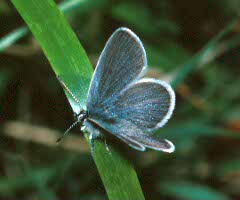

| Home | The Butterflies of Gloucestershire | Species | Habitats | Conservation |
Small BlueCupido minimus |
 |
 |
| Male, 29 May 1978 | 27 June 1977 |
Habitat
The Small Blue is found on many of the unimproved grasslands in the
Cotswolds where its larval foodplant Kidney Vetch (Anthyllis
vulneraria) occurs. The butterflies tend to rest overnight in
long grass in a sheltered position, at the bottom of sloping sites.
Kidney vetch and Small Blues can also be found on some old railway embankments and track beds, in old quarries, and on a few roadside embankments.
The eggs are quite easily found and identified, particularly on small sites with relatively few flowerheads compared to the larger sites. They are seen as small turquoise dots against the white hairy bases of the kidney vetch flowers.
Occasionally Small Blues have been seen far from suitable breeding habitat. A female was once seen egglaying on a kidney vetch in my garden, about a mile from the nearest small colony of the species.
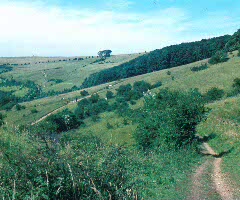 |
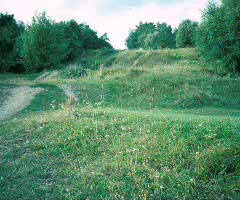 |
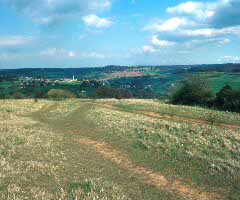 |
Conservation Issues
Kidney Vetch plants can survive for quite a long time in unmanaged
grassland, sometimes remaining in the few patches of shorter turf on
shallow soil or beside a sunken track. This can enable Small Blue to
survive on such sites, although the strongest populations are on sites
with occasional grazing.
Heavy grazing in summer by sheep can wipe out a colony by removing almost all the kidney vetch flowerheads. At least one of the breeds of sheep farmed in the Cotswolds seems to have a taste for vetch flowers, both horseshoe and kidney vetches. Two formerly strong colonies have died out, apparently for this reason. Small ungrazed sites nearby with kidney vetch have also lost the Small Blue, suggesting that they were incapable of supporting colonies on their own without some adults arriving occasionally from the larger sites.
Although there is evidence of the species straying from its colonies, there are some apparently suitable sites which lost it some years ago and which have not been recolonised even though Small Blue still occurs not far away.
Whilst most of the larger colonies are on sites such as commons which are likely to remain suitable, there is a risk of the species continuing to decline on farmland through occasional loss of individual colonies.
|
Flight PeriodThe main flight period is usually from mid May to the end of June or early July. In 1990 the first local record was in late April.In most years there is a partial second generation in July or August. This can be quite numerous on some sites.
DistributionOn many, perhaps most sites with the foodplant, which is confined mainly to Cotswold grasslands in our area.
Some of the non-Cotswold records are of strays.
The species has been recorded twice in SO72, in woodland. There is
no known colony in that area, but there is a patch of kidney vetch on a
roadside embankment a few miles away, perhaps introduced accidentally
as a result of some roadworks. There could perhaps be more of the
plant somewhere nearby, supporting a small colony.
|
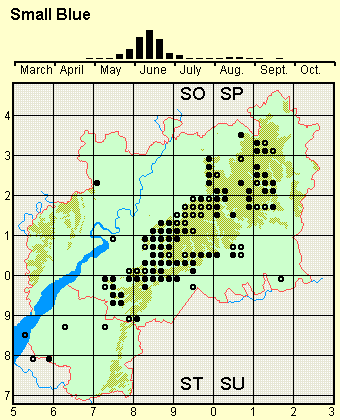 |